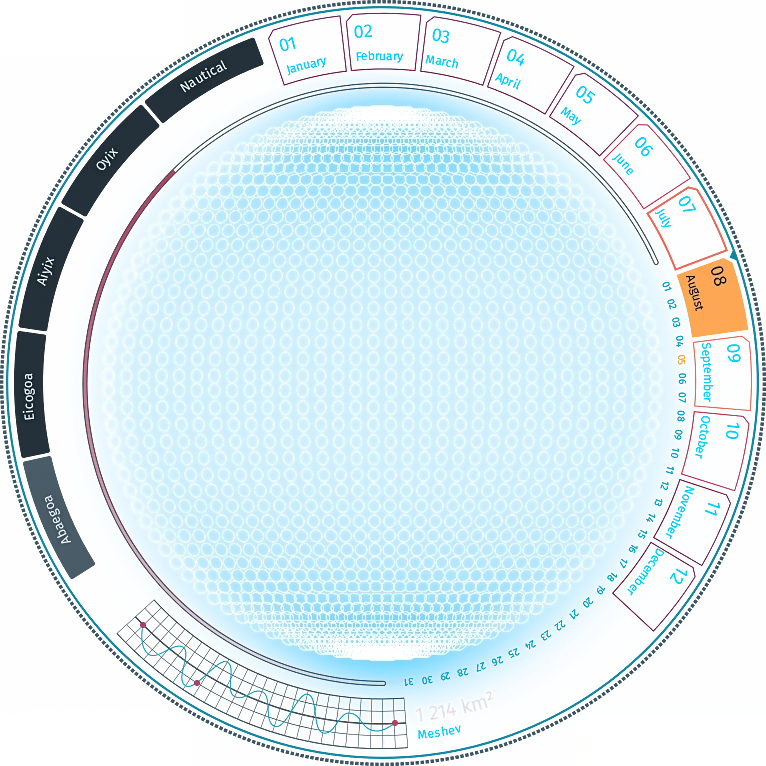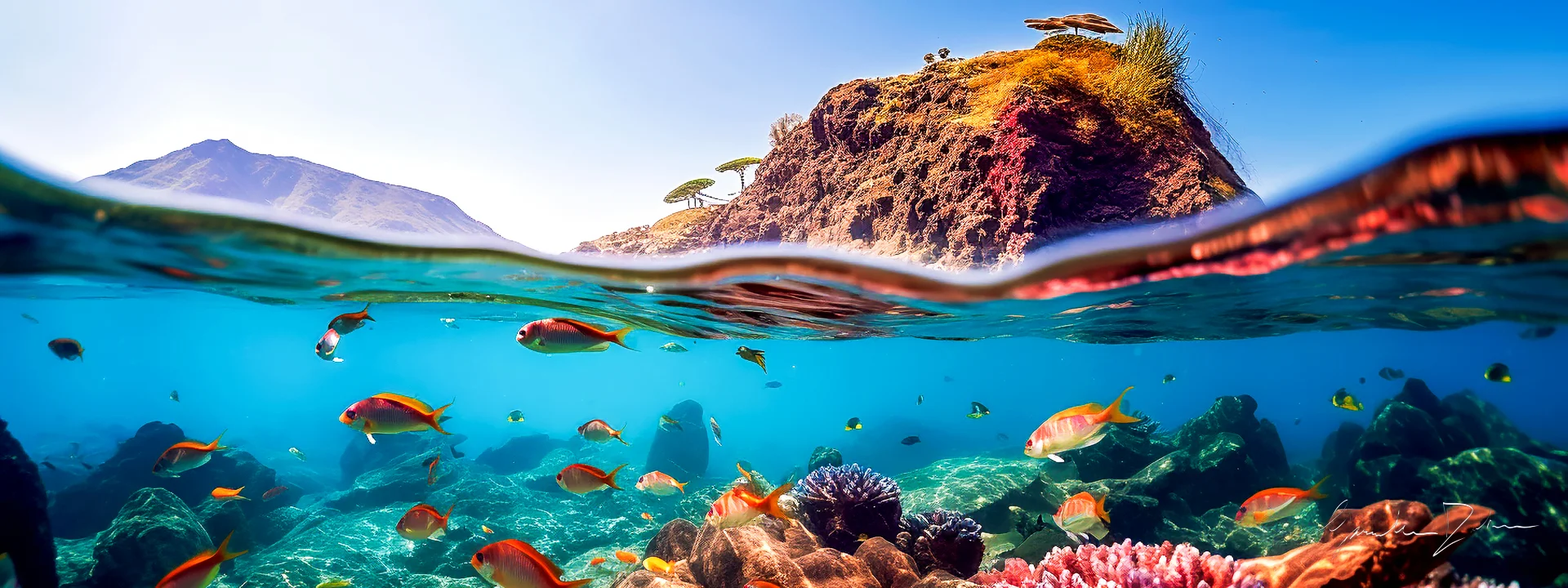Musai (muˈsaɪ)
The Musai have lived on Eivrall for many millennia, inhabiting bodies of water known as the Glassy Deep for their pristine clarity. They live in small pods, forming empathic families that have an inherent understanding of the sea. This intuitive comprehension allows the Musai to detect changes in pressure systems and predict weather conditions. Their unique abilities are widely accepted and revered on Eivrall, earning them a legendary status among seafarers.
Basic Information
Anatomy
Musai anatomical structures exhibit an impressive diversity, each individual uniquely adapted to aquatic life. Uniformly, their morphologies include a humanoid torso. The lower body, however, varies. Some exhibit cephalopod features, such as tentacles, akin to squids or octopuses. Others possess characteristics of cartilaginous fishes, with long muscular forms akin to sharks. More rare types might even display attributes akin to unique deep-sea dwellers like anglerfish. This rich variation accommodates their diverse lifestyles within the oceanic ecosystem.
Genetics and Reproduction
Musai employ an oviparous reproductive mechanism. Their reproductive progress and methods resemble many aquatic species, and involve laying eggs, similar to most underwater species. The females produce the eggs, and the males externally fertilize them once laid in safe, warm currents. This egg-laying and fertilization process allows genetic traits to be passed from Musai parents to their offspring.
After hatching, the Musai progress from a larval stage where they resemble smaller versions of the adults, with undeveloped bioluminescence organs. As they mature, they grow in size, their luminescent organs fully develop, and their scales darken and harden. Musai young mature quite slowly, spending a significant portion of their early life stages navigating and understanding their oceanic environment. It takes around 20 years for them to reach full adulthood.
Dietary Needs and Habits
The Musai are omnivorous, with their diet varying widely to reflect the diversity of their species and ocean habitats. However, their primary nutritional sources are marine-based, dependent on their specific locations and subspecies adaptations. Musai feed on sea plants, crustaceans, smaller fish and other small marine organisms that allow them to thrive as omnivores in the deep seas. They are skilled and cooperative hunters, using group behaviors and strategies to forage effectively in the deep ocean environments. While their diets differ across subspecies and habitats, Musai primarily obtain nutrition from the variety of marine life around them, thanks to their hunting skills and ability to cooperate in groups to harvest from the oceans. Their omnivorous capabilities allow them to flexibly exploit diverse food sources from both plant and animal marine life.
Behaviour
Inhabiting a wide range of oceanic environments, Musai live in pods, functioning as family groups. Dominated by an empathic link, they form an intuitive oceanic network, which allows them to perceive and adapt to aquatic changes swiftly. The Musai's biological cycles align closely with the rhythms of the ocean rather than seasonal changes on land. Their behaviors are primarily influenced by marine tides, currents, and lunar cycles rather than hibernation in colder months. For example, seasonal changes impact migration patterns, food availability, and breeding cycles in the Musai.
Additional Information
Perception and Sensory Capabilities
The Musai possess remarkable capabilities that enable them to dive to great depths without succumbing to pressure-related complications. Their specialized physiology equips them to regulate gases and blood flow, allowing exploration of profound oceanic depths. Still, risks exist - nitrogen narcosis, oxygen toxicity, and high pressure nervous syndrome (HPNS). To mitigate these dangers that come with diving to extreme depths, the Musai utilize a unique respiratory strategy: breathing solely through their gills and expelling all air from their lungs prior to diving. This technique effectively prevents the absorption of atmospheric nitrogen into their bloodstream, thus circumventing the risk of decompression sickness. Their adaptive traits make precise depth limitations unclear, yet evidence suggests routine access to depths from 180 to 305 meters. As they descend further, the effects of pressure intensify, yet the mesopelagic zone remains within their reach. Additionally, the Musai have honed effective methods for equalizing sinus pressure, which safeguards their well-being during the demanding conditions of deep-sea dives.
The Musai's dark underwater habitat at depths approaching 300 meters requires specialized dark vision capabilities essential for navigation in their low-light environment. Their eyes are exceptionally sensitive, featuring reflective layers that enhance their ability to see in minimal light conditions. In the crystal-clear equatorial waters, sufficient light penetrates only to about 10 meters, with intensity diminishing rapidly with increasing depth. Reds fade from view below 5 meters, while yellows and select violets become indiscernible beyond 50 meters. At depths greater than 100 meters, the spectrum narrows to dim blues, cyans, and faint glimmers of green. This spectral limitation confines the Musai's vision, effectively rendering them color-blind. Beyond 200 meters, the Musai are reliant on external light sources to see. Consequently, bioluminescence plays an indispensable role in their visual perception, whether originating from the Musai themselves or other deep-sea organisms.
The Musai boast insulating scales that serve as a protective barrier against the frigid waters of their environment. Unlike many marine creatures, they do not depend on blubber for insulation; instead, they utilize a sophisticated countercurrent heat exchange system that conserves body heat by optimizing the temperature differential between outgoing arteries and returning veins. Furthermore, the Musai have developed behavioral adaptations, actively seeking out geothermal vents to bask in their warmth. Their metabolic processes demonstrate remarkable versatility, allowing them to efficiently regulate their internal temperature in response to the external thermal conditions. This suite of physiological and behavioral traits equips the Musai with a robust defense against the challenges posed by their cold aquatic habitat.
Civilization and Culture
Average Technological Level
Without fire the Musai encounter significant obstacles in refining and shaping metals, creating glass, and engaging in advanced materials science and chemistry. Buoyancy control for tools/supplies is also an issue. This limitation encourages a greater reliance on natural materials over inorganic processes. The Musai's technology focuses more heavily on:
- Selective breeding of plants/animals to acquire desired physical traits or chemical secretions. This allows them to harness marine biology itself in lieu of fire-dependent industry.
- Cultivating bioluminescent signatures for communication/illumination. This becomes an intrinsic biological "technology".
- Preparing medicines, antivenoms and salves from aquatic flora/fauna through oral tradition.
- Migration path knowledge, food cultivation, and riding currents rely on collective generational memory rather than complex transportation methods.
- Minimal architectural augmentation of natural formations like reefs and kelp forests. No full-scale construction.
While lacking fire, some opportunities exist for rudimentary metal shaping near hydrothermal vents. But overall, technology develops along more organic lines leveraging the aquatic environment itself.
Interspecies Relations and Assumptions
The Musai are a peaceful yet characteristically reclusive species who avoid contact with land dwellers, appreciating the solitude and autonomy found in the open waters. They lead mostly solitary lives, separating to hunt individually, but do maintain a tight-knit communal social fabric valued for promoting ecological harmony. Though they have been observed providing occasional aid to seafarers in distress, the Musai fiercely resist any attempts at closer study or exploitation by terrestrial societies. They shy from conflict, but their strong communal bonds bring them together to summon their powers in defense of the community when threatened – either by summoning storms or dangerous marine life. The Musai's deep appreciation of harmony and desire for solitude means they form a delicate balance between individual lives and collective defense focused solely within their ocean domain, without engaging the land-based world. Their reclusive nature allows them to maintain their cherished autonomy and distance from the affairs of surface dwellers.







I'd love to meet a musai, I think we'd get along. I also want to hug a geothermal vent, that sounds nice and cozy :D